Sunwayled M10R

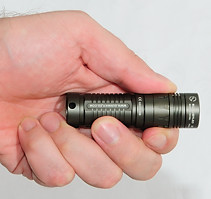
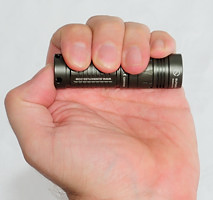
Sunwayled is a new name in flashlight and for their introduction they presented a range of led lights (M10R, M20C, M30A, M40A, M40C, L10A, L10R), most with a ring to select brightness. Here I am going to look at one of the smallest of them, a single CR123 light with 3 brightness settings and strobe. The light is made of aluminum with hard-anodized (Type 3) finish.
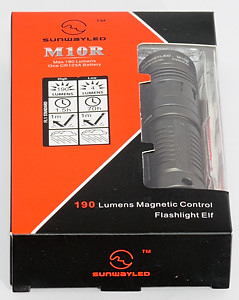

The light is packed in a small cardboard box with a window. It is marked with the new FL1 standard that is supposed to make flashlight ratings more comparable.

The contents of the box is: The flashlight, a lanyard, a clip, a extra rubber boot for the switch, 2 spare o-rings, manual, warranty card and a brochure of the Sunwayled lights. The manual supplied with the first production lights are a early version with corrections in (Medium mode and working voltage range has been corrected).
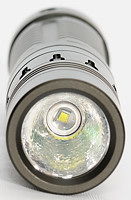
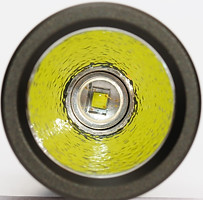
The light has a OP (Orange peel) reflector with a XR-E led. Most manufactures are changing to a newer led (XP-G) due to the slightly higher efficiency and it can take higher current, but the XR-E has one advantage, it is better at throw. Another characteristic of the XR-E led is rings in the beam and they are present with this light.
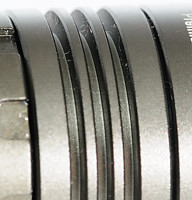
On the head there are some cooling fins.
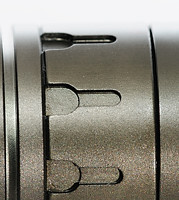
Next is the ring that is used to select between low-medium-high-strobe. It has click-stop, but it is possible to select positions in between. I also found the low between medium and high.
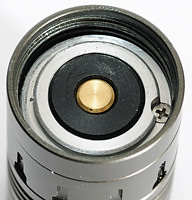
The battery connection in the head is not directly on the circuit board, but on a metal knob.

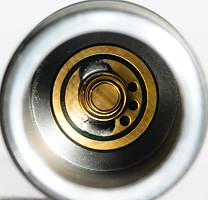
The battery tube uses square threads and an o-ring seal. The threads are anodized making it possible to lockout the light. There is a spring to secure a stable connection to the battery in the bottom of the battery tube.
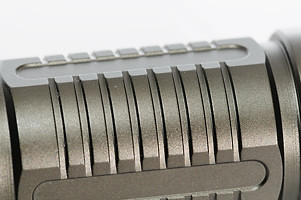
The light does not have knurling but instead some cuts.
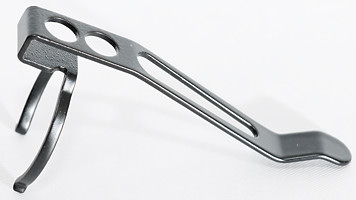
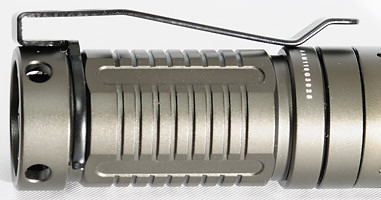
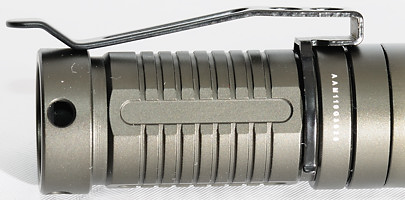
The clip can be mounted either way, but is only practical with head down carry. If the light catches something when worn with the clip, the clip might come off the light, but for keeping the light inside a pocket, the clip is strong enough.
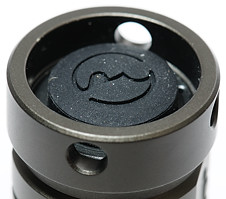
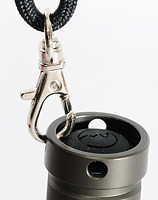
The tail switch is a forward switch and the ring around the switch is high enough that the light can tail stand.
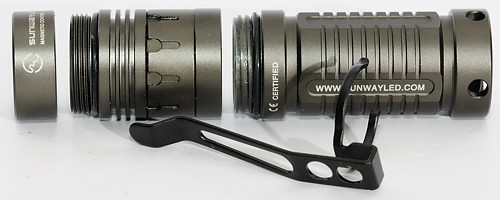
This is the parts I could disassemble the light into without using tools.
The light has a good mechanical quality with a good user interface (The ring), it has a good runtime and a nice fade out at the end of the runtime. It is also a very nice feature with the low low level, but this leaves a hole between low and medium.
Technical specification and measurements
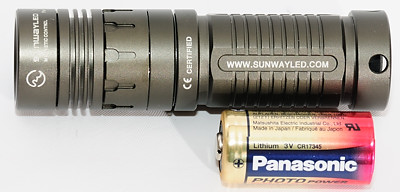
This light is only rated for CR123 batteries.
Measured size and weight:
Length: 83.7 mm
Diameter: 22 to 23 mm
Weight: 62.2 gram with CR123
The light uses a Cree XR-E R2 led

In the above table I have used 1400mAh CR123 batteries for estimating the runtime. The estimated lumen are based on the specified 190 lumen and then scaled according to measured brightness, note that the medium is considerable higher than specified and the low is considerable lower than specified. The runtime is specified as 1.5 hour on the box and 1 hour in the manual. Both values can be correct, because in FL1 the runtime is specified 10% brightness, where many other runtime specifications are to 50% brightness.
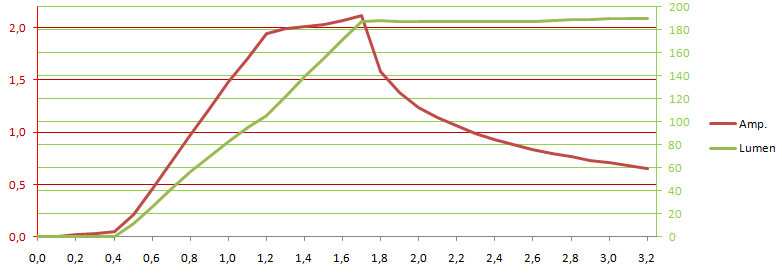
A voltage scan shows that the light has very good regulation down to around 1.7 volt. The driver is limited to 2 ampere from the battery. The light is using 2.1 watt at 3 volt and hits a maximum of 3.6 watt at 1.7 volt.
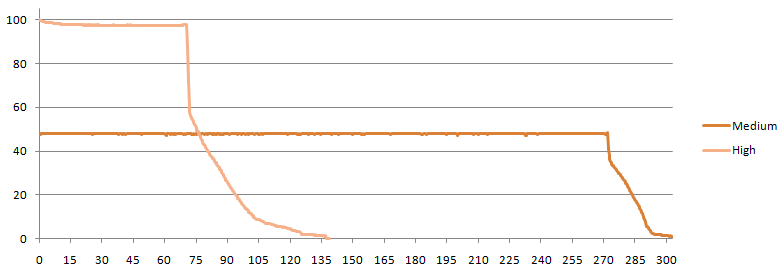
The runtime plot also shows the good stabilization and a nice slow fade of the light when the battery is running empty. High keeps full stabilization for about 70 minutes and are down to 50% after 75 minutes, but there are still nearly an hour of weak light. According to FL1 standard (10% brightness) the runtime is 103 minutes on high.
The light uses current control with a very smooth regulation, i.e. there are no pwm.

The light has a fast strobe of 12.5 Hz with 50% duty cycle.

When measuring the strobe my scope told my it was 25 Hz, that was clearly not the case. Looking closer at the start of each strobe pulse I found the explanation. The driver has a initial spike and then turns off for a short time (1/5000 second), this is completely invisible in daily use.
Comparison to other Flashlights
NiteCore SR3 CR123, NiteCore SR3 LiIon, Dereelight C2H R2 CR123
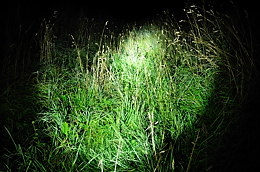
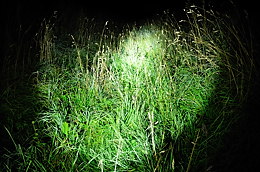
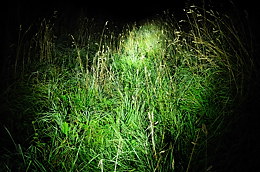
Dereelight C2H R2 LiIon, Fenix PD20 R2, Sunwayled M10R
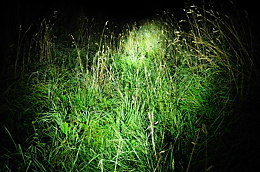
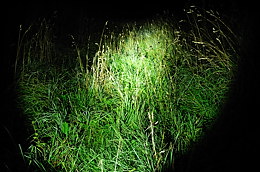
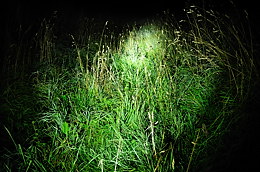
For the full comparison to other lights with graphs and beamshots see here.































